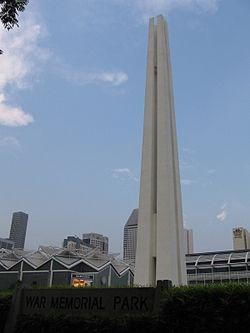
I already understood that race is a “fuzzy” concept in U.S. terms. I have been in Singapore for a week facilitating several sessions for a group called Diversity and Inclusion in Asian Network (DIAN) and I learned that race is defined very differently in Asia than it is in the U.S. and might be an even more fuzzy concept across Asia. While most of us realize that the anthropological definitions of yester year are outmoded, it seems like they have not been replaced with anything that is consistent around the world.
The old classification system identified three races: Caucasoid (primarily Europeans), Mongoloid (primarily Asians) and Negroid (primarily those of African Descent). These designations were largely based on physical attributes, the most notable being skin color. Scientists have long held that race is not biologically determined and that it is basically a social abstract conceived by people who had the need to rank order people by skin color, hair texture, etc., with white being at the top of the pecking order.
In the U.S., many still think of race as black and white. The census denotes that those of Latino heritage can be of any race. However, these definitions have become so fuzzy that the Census is now leaning towards using ethnicity rather that race to sort different demographic groups.
I was invited to Singapore to launch my new book, “We Can’t Talk About That at Work!: How to Talk About Race, Religion, Politics and Other Polarizing Topics”, and facilitate several sessions specifically with the focus on race. I was advised that race is a particularly taboo topic in many parts of Asia. In preparing for the sessions, and then subsequently during my trip I learned that there is no consistent definition of race across Asia, and as matter of fact what some countries describe as race, I would define as ethnicity.
For example, in Singapore, there are four primary “races”: Chinese, Indian, Malay and Eurasian. Chinese make up 75 percent of the population and Singapore prides itself on being a very accepting, multicultural city-state. I was informed, however, that it is not without its “racial” problems. It seems that in Japan, race is viewed as Japanese and all others, with the “others” not being very well accepted. In Hong Kong race is thought about in terms of British, Cantonese and anyone else. The “anyone else’s” are considered different races and face discrimination. India has essentially eliminated racial classifications, but again it does not mean that discrimination does not exist. There are over 2000 ethnicities in India and ethnic relations are described as “complex and challenging.”

The Civilian War Memorial in Singapore; The four identical pillars represent the four major races of Singapore
Color is a key way that we think about race across the globe. Generally speaking, those with darker skin are viewed as being a part of a different, lesser race and receive the poorest treatment. While this is not totally the case in Asia, it seems to characterize much of the way people are classified.
So, what is my conclusion from all of this. When someone starts to talk about “race”, it is important to ask how they define the term. Perhaps “race” is an outmoded term with little importance in modern society. African American, Asian American, Latino, Malay and Cantonese are not races so why do we call them that? They are ethnicities defined as groups of people who share common cultural practices, perspectives, and heritage (language, religion, geographic region). Ethnic differences are not inherited; they are learned.


















